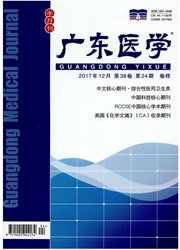

 中文摘要:
中文摘要:
目的 研究活化T细胞核因子蛋白c1(NFATc1)过表达对唑来膦酸诱发的破骨细胞生成抑制的挽救效应。方法 小鼠NFATc1重组慢病毒转染RAW264.7细胞,验证NFATc1蛋白表达。细胞分为A、B两组,分别转染空白载体和NFATc1重组载体。两组细胞均用50ng/mL核因子κB受体激活蛋白配体(RANKL)诱导5d,并在第2天加入1×10-6mmol/mL唑来膦酸作用2d。第6天收获细胞,检测破骨细胞的生成和功能及NFATc1、抗酒石酸酸性磷酸酶(TRAP)、酪氨酸激酶(c-Src)基因的表达情况。结果 NFATc1蛋白在细胞中均有表达。B组TRAP阳性破骨细胞数、牙本质吸收陷窝数目和面积显著高于A组(P〈0.01)。B组NFATc1、TRAP、c-Src的蛋白水平显著高于A组(P〈0.01);B组3个基因mRNA水平显著高于A组(P〈0.01)。免疫荧光细胞化学检测也得到相似的结果。结论 NFATc1过表达对唑来膦酸诱发的破骨细胞生成及NFATc1、TRAP、c-Src基因表达的抑制具有挽救效应;NFATc1作为Ca2+信号的关键分子,在唑来膦酸诱发的破骨细胞生成抑制中起着关键作用。
 英文摘要:
英文摘要:
Objective To investigate the rescue effect of nuclear factor of activated T cells type cl (NFATcl) over - expression on zoledronate - induced inhibition of osteoclastogenesis. Methods RAW264.7 cells were transfected with mouse recombinant NFATcl lentivirus, and protein expression of NFATc1 was verified. The ceils were divided into Group A and B, in which the cells were transfected with blank vector and recombinant NFATcl vector, respectively. The cells in both groups were treated with 50 ng/mL RANKL for 5 days and 1 × 10^- 6 mmol/mL zoledronate for 48 h from Day 2. The ceils were harvested on Day 6 and osteoclastogenesis, as well as gene expression of NFATcl, TRAP and c - Src were examined. Results NFATcl protein was successfully expressed in RAW264.7 cells. TRAP positive muhinuclear osteoclast count, and the number and size of absorption lacunae on dentin slices in Group B were all significantly higher than those in Group A (P 〈0. 01 ). Protein levels of NFTAcl, TRAP and c - Src in Group B were also significantly higher than those in Group A (P 〈0. 01 ). And mRNA levels of above three genes in Group B were significantly higher than those in Group A ( P 〈 0. 01 ). Similar results were also achieved in immunofluorescent cytochemistry examination. Conclusion Over - expression of NFATcl can rescue zoledronate - induced inhibition of osteoclastogenesis and up - regulate gene expression of NFATcl, TRAP and c -Src. As a key transducer of Ca2+ signal, NFATcl may play a key role in zoledr- onate - induced inhibition of osteoclastogenesis.
 同期刊论文项目
同期刊论文项目
 同项目期刊论文
同项目期刊论文
 期刊信息
期刊信息
